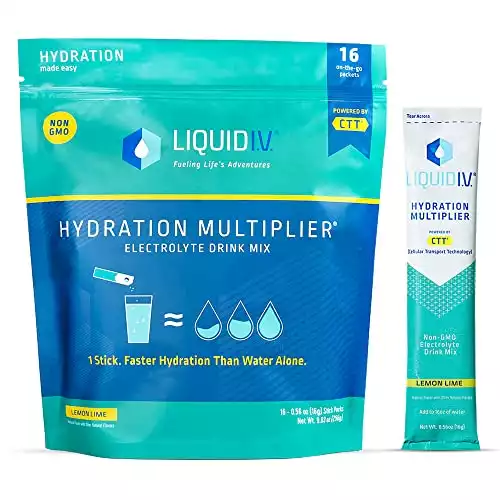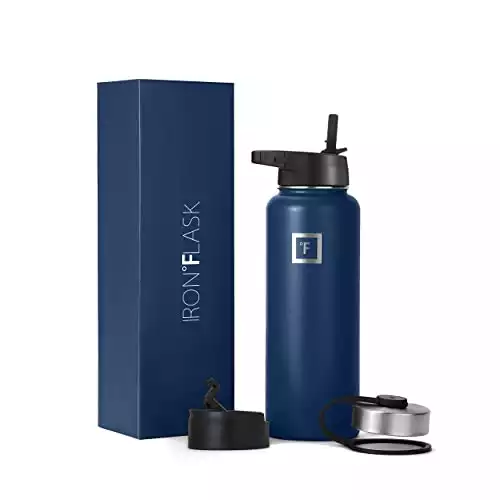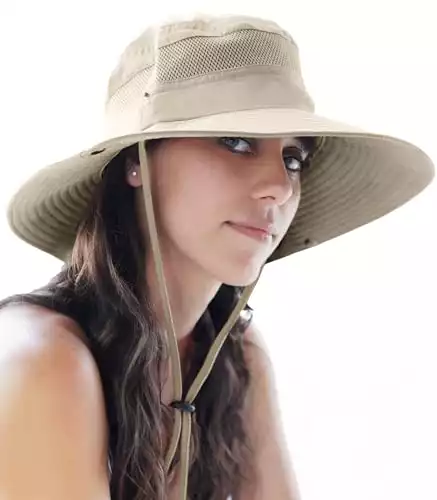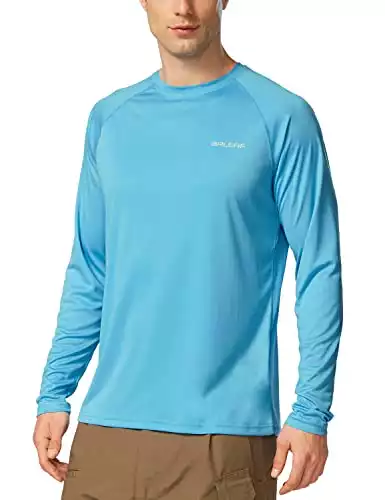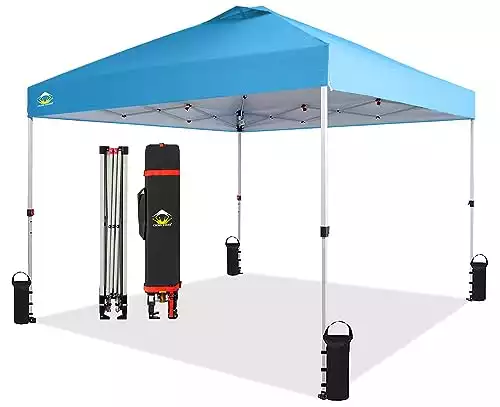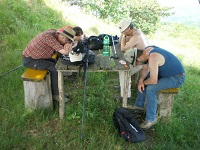If you’ve ever felt like your body has overheated and it can’t cool down; you may be experiencing a sign of heat exhaustion. I have felt like this on a couple of occasions when I have pushed myself too much without enough hydration and sometimes while in very hot conditions.
Heat exhaustion can be prevented by taking precautionary measures before, during, and after the activities, you’re engaging in. The main way to prevent it is by being thoroughly hydrated before, during, and after your activity.
Once I was working in my attic. I was sweating a lot and just ignored the fact that I was thirsty and hot because I wanted to finish my work before having to crawl all the way back out.
After the job was done, I found I was exhausted and just couldn’t recover my strength and felt like I had a fever for a while. This may have been heat exhaustion. What signs should you look for? Let’s find out.
Why Water Helps Prevent Heat Exhaustion
We need water to take care of almost all the processes in the body. We can get by with less water than our body needs, but our body will not function at full capacity.
Some people go through life being dehydrated on most days. Why? Because they have lost the ability to recognize when their body needs water.
If you ignore your thirst for a couple of weeks, either by distraction or necessity, you’ll become used to it and the body will not trigger your thirst signal, even though you do not have a normal level of hydration.
If you don’t have the water you need, your body can’t handle high temperatures for long. So getting enough water for daily activities, and even more when you exercise or do activities where you perspire a lot, will help you maintain proper temperature levels and help prevent heat exhaustion.
Keeping Track of Your Water Intake
Nowadays many people carry a water bottle with them to work, outings, and workouts. We have lots of information about how important it is to get enough water.
Some apps can help you get the amount of water your body likely needs based on age and body weight.
It takes a couple of weeks for your body to get used to holding more water. But if you keep at it, you’ll be able to be fully hydrated by drinking the amount recommended daily.
For me, at about 180 lbs, I’d need to drink about 5 bottles of my Camelbak 25oz (AD) water bottles, if I exercise 30 minutes a day. If you were 100 lbs and didn’t exercise, you’d need to drink 2 and two-thirds of a 25oz Camelbak bottle.
For each pound of weight, you’d want at least .5oz to about .66oz for a non-exercise day. For a 30 minute exercise day for each pound, you’d want .62oz to about .78oz of water.

1. Drink Electrolytes

Our bodies operate better when we have the nutrients needed to help with hydration. “Sodium, calcium, potassium, chloride, phosphate, and magnesium are all electrolytes. You get them from the foods you eat and the fluids you drink.”(Credit – https://medlineplus.gov/)
When we exercise we tend to sweat and loss electrolytes. If we drink a sports drink or add powdered electrolytes to water, we are helping the body to rehydrate faster and stay hydrated longer.
Electrolytes are electrically charged minerals and can do such things as: help the muscles to work well, allow the cell to get the correct amount of fluids, and maintain healthy body functioning. Here are the electrolytes you might find in a supplemental drink or powder: sodium, potassium, magnesium, calcium, phosphate, and chloride.
Do you need Electrolytes?
If you are eating fairly healthy and keeping hydrated regularly, you most likely won’t need to add electrolytes to your exercise routine. But, if you are going to sweat a lot or are in a situation that you’re not used to, using an electrolyte powder or drink could be helpful.
Those who lack hydration and are not eating a healthy diet will be hit hardest when things get hot and demanding. If you can prepare beforehand and know about some events that may be challenging, deciding to take some electrolytes may make the difference between overheating or preventing heat exhaustion.
2. Plan Your Water Intake
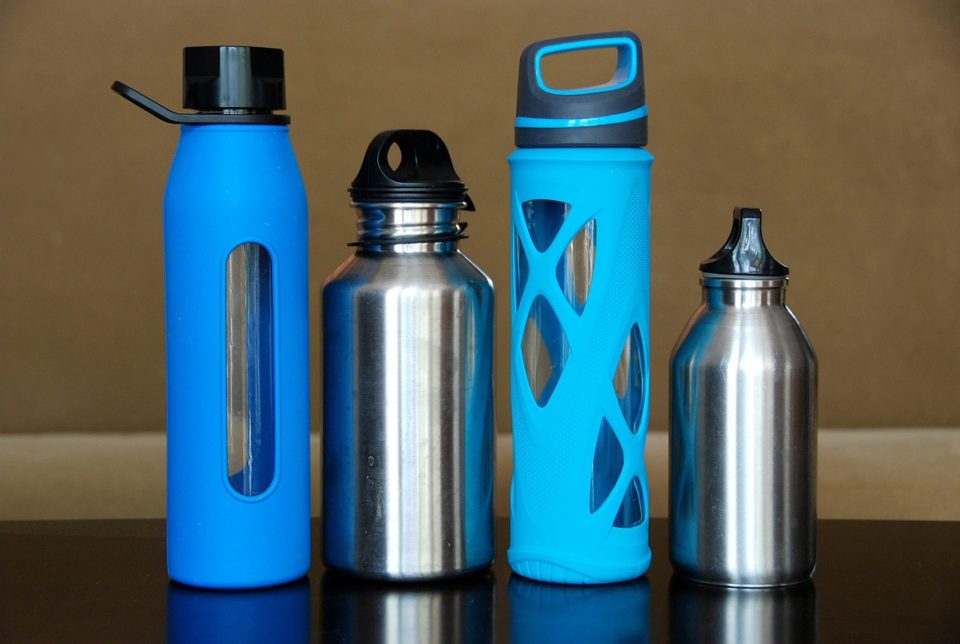
Getting your water levels to their optimum levels will enable you to handle exercise and hot situations much better. Getting a bottle that works well for you in the situations that you’re in can mean the difference between staying hydrated and forgetting to focus on it.
Buying disposable water bottles may seem like a good idea, but they are not the healthiest choice. Made to be disposed of, they start to leach plastics as soon as they are opened.
A well-constructed bottle is less likely to leach plastics and saves money and the earth. A metal bottle may be the healthiest and some are great at insulating.
Once you find the bottle that works for you, you can then calculate how many refills you’ll need each day. To keep track, decide what method works best for you, whether it’s a water reminder app or placing a note in your planner.
As you keep track of water consumed, you’ll notice your habits better and determine what hydration methods are best suited to your situation.
Just keep at it, even if you fall off the wagon; eventually, you’ll start to get to a point where drinking more water will become a habit and your natural thirst mechanism will start to let you know when you need water if it wasn’t working so well before.
3. Use Sunscreen

One way to prevent heat exhaustion is to use sunscreen. Your body tries to keep its temperature regulated at the same temperature all the time. It tries to cool you down by sweating when things get hot.
When you get sunburned, your body starts to have an inflammatory response. An increase in fluids to the site helps to get the healing started, but if you’re already dehydrated, you’ll have a hard time regulating your body temperature and may start to overheat.
Using sunscreen will prevent the need for your body to use more water and can help stop heat exhaustion and skin cancer.
4. Use Protective Clothing
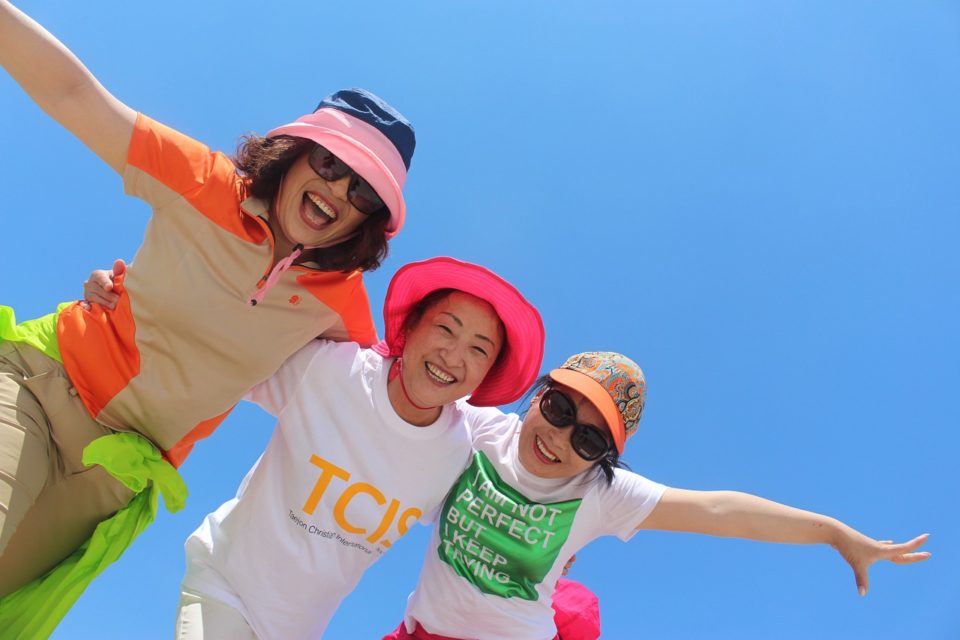
If you’ll be out in the sun for more than 10 minutes, it is a good idea to protect yourself from the harmful rays of the sun. A good way to determine what you’ll need is to consider how hot you’ll be and the amount of sun exposure.
If you’re walking, you’ll be exposing your head mostly to the sun, so light, breathable clothing can help you cool off while a hat protects you.
If you’re laying down at the beach, then you’ll want to dress in breathable clothing but be fully protected from head to toe.
Will you be in the Sun Without Shade?
When staying out in the sun without any shade, it’s always a good idea to have a hat. Sunscreen can wipe off sometimes and may get accidentally left off somewhere on your face.
A hat can prevent sunburns to your face, neck, and top of the head. The arms also need protection but may require a bit less full coverage from clothing when using sunscreen.
When in the water for long periods, using a full-length sleeve shirt can help prevent burns. Water tends to reflect the sun’s rays, increasing the chance of sunburns.
Shorts or light pants are usually best to wear out in the hot weather so your body can keep cool, just make sure to continue to apply sunscreen often, especially when sunbathing.
Sunglasses can protect your eyes and the area around your eyes.
Don’t forget to look for clothing that is specifically SPF-rated to protect against the sun.
With a little planning, you can be well prepared to protect yourself from sunburn and heat by wearing light protective clothing that breathes well.
5. Watch the Humidity Levels

A humid day can find you perspiring quickly without doing any sort of work at all. Humidity can prevent your body from cooling naturally. When you sweat, it evaporates and cools the body, but in humid weather, evaporation occurs less.
If you have to work or exercise outside, it’s important to monitor your body and take precautions to stay cool and hydrated. If the humidity is over 60% try doing your activities inside because your body won’t be able to cool off at a normal rate.
You can start the day by drinking plenty of water and using a sports drink or an electrolyte powder in your water to ready yourself for a humid day outside.
Sometimes it’s best to cancel the activity when it’s too hot and humid.
You might want to try one of the following strategies to prevent heat exhaustion if the situation permits:
Taking breaks often is one strategy to help you check in on how you’re doing. Try stopping at least every 30 minutes to see how you feel.
Carrying a water bottle with you for easy access is also very helpful. You might be in a situation where you can’t get to water easily. Try strapping a bottle to your hip to prevent overheating.
Dressing in cool, water-absorbing clothing and bringing extra clothing can help you stay cool. If you’re wet and your clothing is, too, changing your shirt a couple of times during the day can give your body a chance to dry up and cool off.
Switching between inside and outside activities can give you a chance to cool down between events so you can get outside again if needed.
Staying indoors is probably the best solution. If you have an air conditioner or dehumidifier, you can exercise inside and your body will have a chance to cool down.
6. Skip Your Morning Caffeine
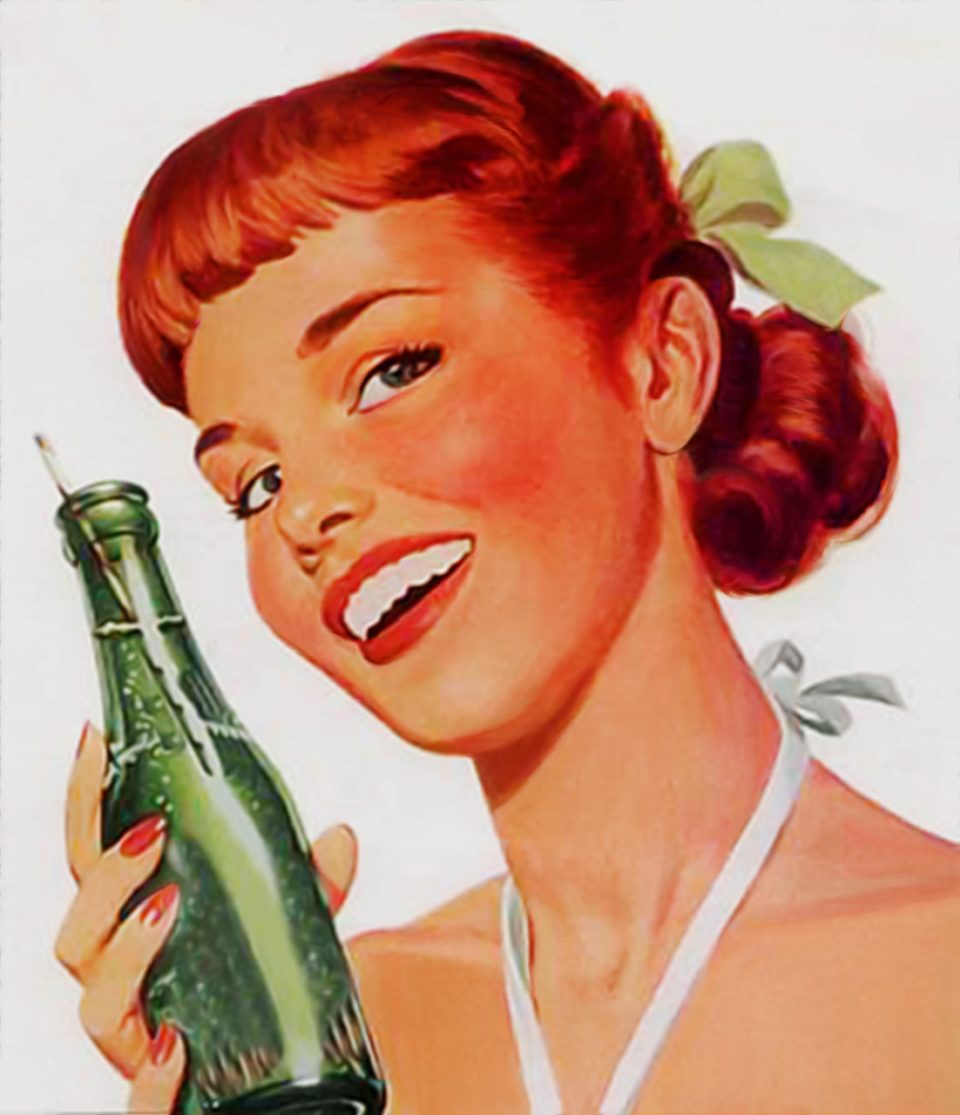
While your coffee and soda might help you wake up, they can also make you more prone to urinate. Although it’s not going to dehydrate you, too much caffeine can start to affect your water levels.
The caffeine in coffee is a diuretic and drinking water may help a bit more overall with heat exhaustion prevention versus coffee.
Caffeine drinks and sugary drinks can also affect your overall water levels. Sodas that contain caffeine are also diuretic and the sugar inside them can also lead to dehydration.
That being said, one cup of coffee or a can of soda isn’t going to affect you much. If you’re on the fence just remember that water is great at giving you energy, especially if you keep fully hydrated every day.
The best way to prevent heat exhaustion is to drink water or a sports drink, and avoid lots of sugar or caffeine throughout the day.
7. Watch for High Temperatures
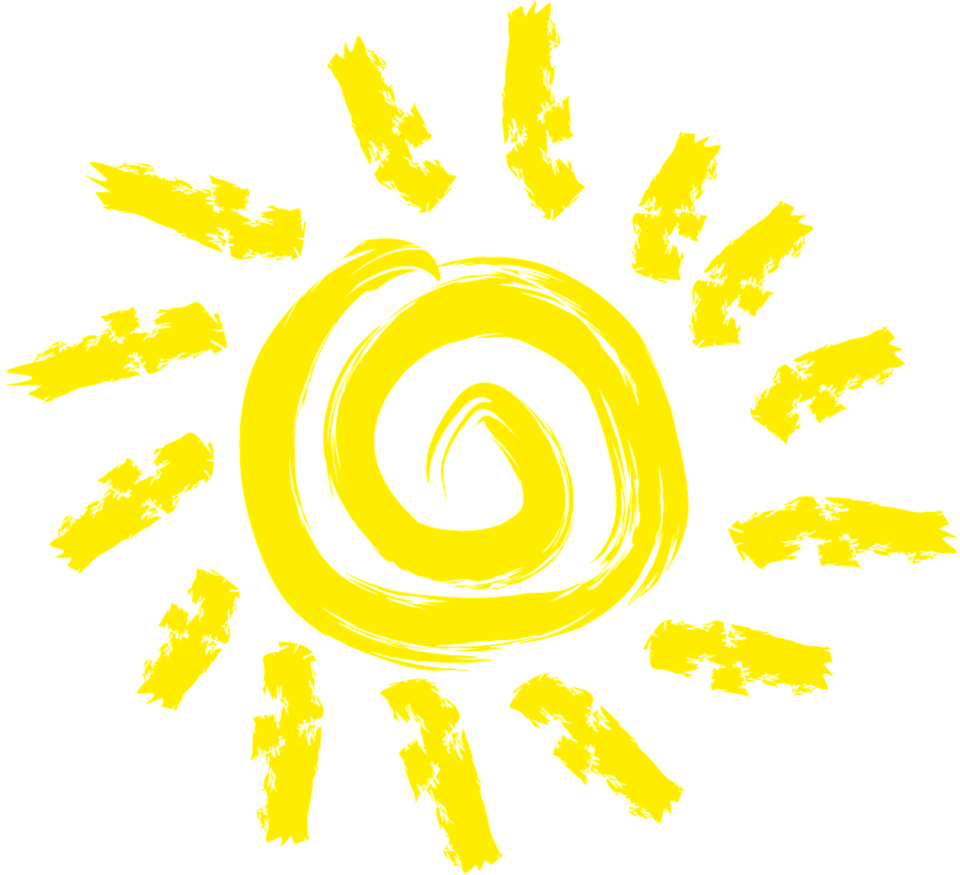
The weather is prone to extreme temperatures at times. While at lake Mead and in the Las Vegas area, I experienced hot sun, sand, and wind. There was little to do to cool off except go in the lake.
During temperatures above 90° F, the body can start to get hot quickly. Keeping aware of rising temperatures can help you prepare for the heat.
On my trip, we had plenty of extra water and shade. We would rest often and cool off in the lake. We avoided getting sunburns and waited until the sun went down over the horizon to go walking around the lake.
Be sure to plan for the worst so you won’t have to suffer the effects of heat exhaustion, getting sunburned, or both.
8. Carry Portable Shade
As you engage in different activities, you’ll likely be able to do them in full or partial shade. Having a large pop-up canopy can make a big difference in comfort level and prevent individuals from getting sunburned, which could lead to overheating.
Think about where you’ll be and what the worst-case scenario is. I’ve been to many events where we had to sit in the sun because all of the shaded areas were taken.
Bringing an umbrella (AD), a sun hat (AD), or even a makeshift shade like a newspaper can make a big difference if sitting in the sun.
If you make it a habit to always carry sunscreen, which is a kinda like sunray shade, with you in your car or purse, you’ll be much more at ease when your are put in a sunny situation.
9. Cool Off with Water
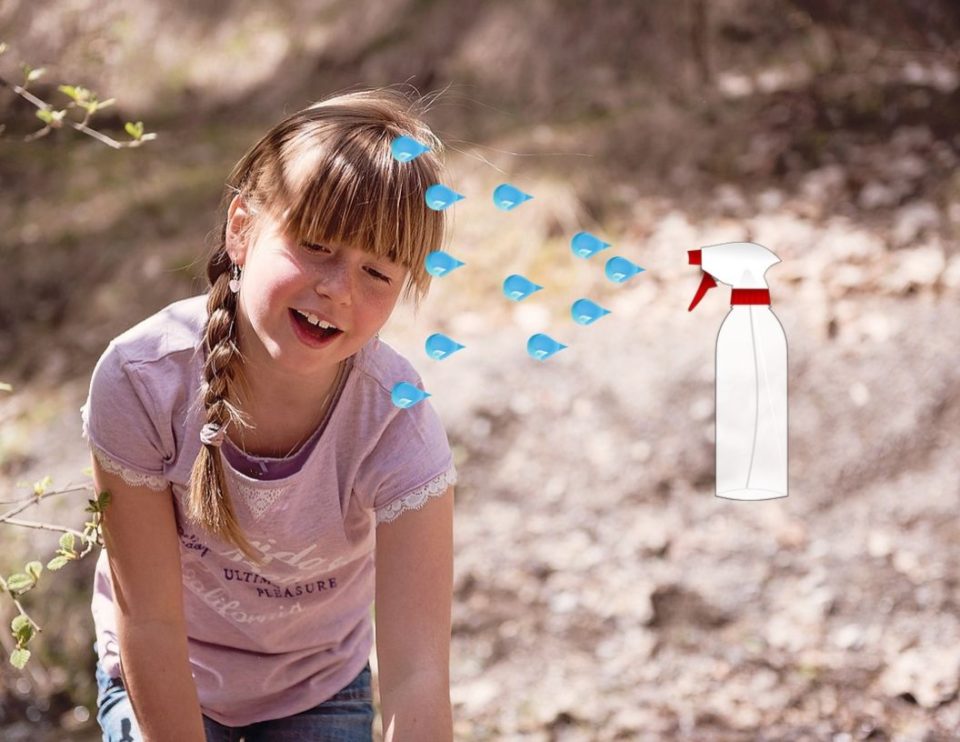
If you’re already hot and you still plan on staying outside, it is vital to cool off. You may have hydrated well, used sunscreen, and gone under the shade, but remain hot.
One way to cool off is to use water on a fabric hat. Some people will pour water on their shirts and help cool down their body temperature. You can use a spray bottle on your face and head to get a bit of relief.
Some fabrics are specifically made for cooling. Getting a cooling gaiter (AD) can keep you cooler for longer. All you need to do to get it cool again is add some water.
A gel ice pack can bring some relief as well and will last for several hours. If you notice you’re not cooling down or getting hotter, it’s time to get inside and possibly get some help monitoring if things get worse.
10. Take a Friend
If you’re doing any type of activity where there is a risk of heat exhaustion, take someone with you. You’ll be able to help monitor each other and get help if needed. You’ll want to look for signs that you or your friend are overheated.
Look for the following signs as you are doing your activity and check in with your friend to make sure you can avoid heat exhaustion.
| 10 Signs of Heat Exhaustion
|
|---|
|
Overly tired |
|
Can’t cool down |
|
Pale clammy skin |
|
Feel nauseated |
|
Dizzy, lightheaded, or fainting |
|
Excessive sweating |
|
Cramp in muscles |
|
Headache |
|
Excessive thirst |
| Weak and high heartbeat |
Your friend can help you identify problems and help you to stop and avoid any possibly more serious problems. If you notice someone is suffering from heat exhaustion, you can help them cool down and get their body temperature under control.
Conclusion
Try to plan your day so you can be ready for hot situations. If you are hydrated well and give yourself time to cool off, you can prevent heat exhaustion. Having others with you can help you get support when needed.
Don’t forget sunscreen and protective clothing will help. And if you need to stay hydrated long be sure to use electrolytes.
I hope you stay safe and cool in whatever adventure or activity you’re pursuing.
Thanks for visiting Helpshoe.com


